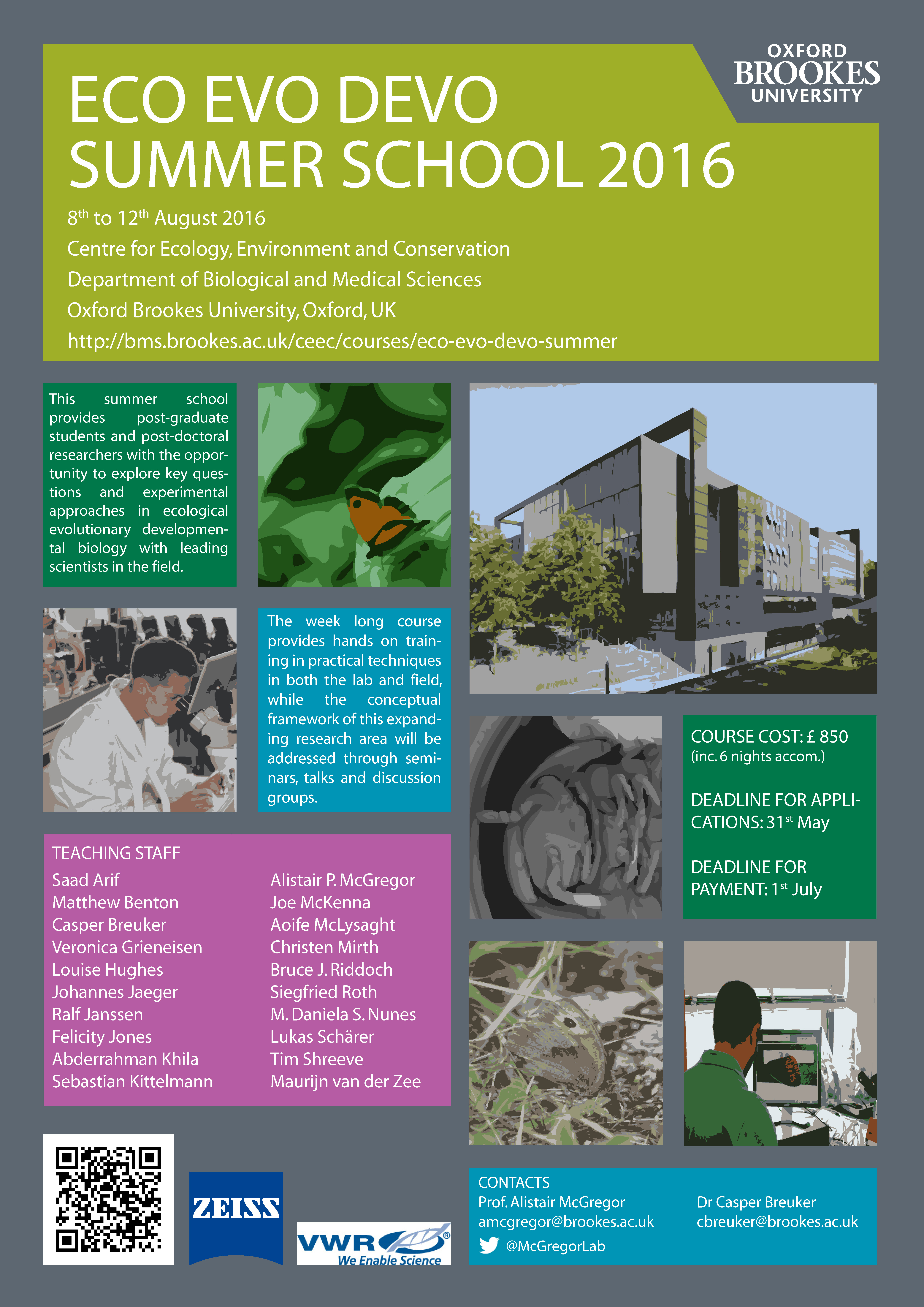21st Century Journal Clubs
Posted by rrb, on 2 February 2016
Does anyone have 21st century ideas on how to run a diverse (not just developmental biology) departmental journal club?
Posted by rrb, on 2 February 2016
Does anyone have 21st century ideas on how to run a diverse (not just developmental biology) departmental journal club?
Posted by Katherine Brown, on 2 February 2016
Last week, I attended the Keystone Symposium “Molecular and cellular basis of growth and regeneration”. This outstanding meeting was the second incarnation of a Keystone meeting on regeneration; the first having been held in 2012 – Development reviewed it here. The expansion in scope of this year’s meeting to encompass both growth and regeneration was, in my opinion, an excellent move on the part of the organisers Alejandro Sanchez Alvarado, Valentina Greco and Duojia Pan. Bringing together these two related fields highlighted the common themes, as well as the differences, between developmental and regenerative programs, and made for a diverse yet coherent meeting. With 115 attendees, who all threw themselves into the interactive spirit of the meeting, the relatively small size was conducive to excellent discussion sessions at the end of each talk and lively poster sessions each evening. All this, along with some excellent snowboarding during the afternoon breaks, made for a highly informative and thoroughly enjoyable conference.

Overall, the standard of talks was fantastic, and I won’t be able to summarise them all here (not least because the majority of the work presented was unpublished), but I will pick out some of my personal highlights and some of the common themes that emerged from the meeting. Many apologies to those whose work I haven’t mentioned: I can assure that it’s not because I didn’t enjoy your talk!
The evo-devo field was well represented at this meeting, kicking off with an excellent Keynote presentation from Hopi Hoekstra – who told an unpublished story on the developmental and molecular basis of pigmentation patterns in rodents. Her talk, like several others, highlighted the value of genomic approaches in non-traditional model organisms to uncover key regulators of developmental processes. Arkhat Abzhanov and Rich Schneider both presented beautiful work on craniofacial morphology in birds. Abzhanov studies Darwin’s finches and other songbirds, which show significant diversity in beak size and shape. Through an impressive combination of genomics, mathematical modelling and comparative embryology, his lab has uncovered mechanisms and regulators of beak growth (he’s written about this on the Node). Schneider, meanwhile, uses quail-duck chimeras (‘qucks’ and ‘duails’) to explore the mechanisms governing jaw size – which differs significantly between these two species. These experiments have uncovered a remarkable degree of autonomy in the behaviour of cranial neural crest cells – donor cells from one species transplanted into a host of the other continue the developmental program of the donor, both spatially and temporally (you can also read more about Schneider’s work on the Node). In what one attendee described as ‘the best talk ever’, David Kingsley presented some of his lab’s recent data on the genetic basis of diversity in 3-spined sticklebacks, as well as a spectacular example of the power of comparative genomics and mouse genetics (McLean et al., 2011) to uncover the molecular basis of human-specific traits – in this case, neocortical expansion. These speakers all focussed on inter-specific variation, while Elaine Ostrander’s interests lie in intra-specific variation, namely in the remarkable diversity of morphological features of dog breeds. With the genome sequences of many breeds to hand, her lab has been able to identify key regulators of phenotypes such as size, leg length, skull shape and fur growth (this review provides a great overview of the field).
An impressive diversity of model species was apparent not only in the evo-devo talks and posters but also in those addressing regeneration. The varying regenerative powers of Stentor coeruleus (a single celled ciliate), Arabidopsis, Nematostella, planarians, Drosophila, sea urchins, sea cucumbers, zebrafish, Xenopus, axolotl, 2 species of mouse (Mus musculus and Acomys cahirinus) and human were all discussed (apologies to any species I’ve left off this list!). Among the talks in this area, I particularly enjoyed Ken Poss’ presentation on clonal heterogeneity in the regenerating zebrafish fin, Alejandro Sanchez Alvarado’s exploration of the properties of planarian neoblasts and their developmental origins, and Valentina Greco’s beautiful live imaging of skin regeneration and homeostasis in mouse.
As well as Greco, Aaron Mertz also showed impressive movies of mouse skin, this time during development, revealing some of the cellular mechanisms underlying stratification of the embryonic epidermis (the paper – Ouspenskaia et al., 2016 – came out on the day he gave his talk). Other stunning examples of the power of live imaging to follow and understand developmental processes came from Yohanns Bellaiche’s analysis of cell division and rearrangement in the Drosophila thorax (Guirao et al., 2015), Marcos Gonzalez-Gaitan’s high resolution imaging to reveal mechanisms underlying asymmetric cell division in Drosophila sensory organ precursors (Derivery et al., 2015), Matt Gibson’s work on early embryogenesis of Nematostella, and Jochen Wittbrodt’s beautiful movies of medaka eye morphogenesis (or ‘retinal gastrulation’ as he referred to it) (Heermann et al., 2015). In several of these cases, analysis of the data required sophisticated processing and analysis workflows and integration with computational modelling – the power of which is becoming ever clearer, and which was beautifully illustrated by L Mahadevan’s talk (which covered systems as diverse as the chick gut, the human brain, and plant pollen tubes!) (Tallinen et al., 2014; Shyer et al., 2013; Campàs & Mahadevan, 2009).
Wittbrodt’s talk touched on another recurring theme of the meeting: the potential and plasticity of adult tissue stem cells (in his case, those that mediate the life-long growth of the fish retina) (Centanin et al., 2014). Jayaraj Rajagopal presented data on the in vivo and in vitro plasticity of mammalian airway epithelial cells – in both regenerative and cancer contexts (Pardo-Saganta et al., 2015). Norbert Perrimon and Bruce Edgar both discussed the Drosophila intestinal stem cell model: Perrimon focussing on mechanical regulation of in homeostasis of the gut epithelium, and Edgar looking at the signalling pathways regulating regeneration following bacterial infection (Jin et al., 2015). Joseph Rodgers, meanwhile, has been investigating stem cell quiescence and its regulation in the mouse muscle system (Rodgers et al., 2014); his data suggest that systemic mechanisms exist to prepare quiescent cells for likely re-entry into the cell cycle. In all these cases, it is clear that a simple model of resident, quiescent tissue stem cells becoming activated upon injury to replenish lost cells through proliferation and differentiation does not account for the complexity of regulatory mechanisms and cell states that exist in adult tissues.
But what happens when tissues can’t rely on proliferation to repair damage? Vicki Losick showed a striking example of non-proliferative tissue repair in the Drosophila adult epidermis. These cells are post-mitotic, and wounds are healed by a combination of dramatic polyploidisation as well as cell fusion (Losick et al., 2013). This was not the only talk showing an important role for endoreplication: the presentations from Bruce Edgar, Mary Baylies (Drosophila muscle development) and Pranidhi Sood (Stentor regeneration) all touched on the idea that control of cell ploidy can play a critical role in development, homeostasis and regeneration.
Several talks highlighted functions for the immune system, or immunity signalling pathways, in developmental or regenerative processes. In adjacent, highly complementary talks, Duojia Pan and Laura Johnston presented data on the Toll pathway in Drosophila; you can read more about Johnston’s work on cell competition here (Meyer et al., 2014), while Pan’s intriguing talk on Hippo-Toll crosstalk is hot off the press at Cell (Liu et al., 2016). Also in Drosophila, Andreas Bergmann is looking at the role of hemocytes in the regulation of apoptosis-induced proliferation. Moving into vertebrates, Nadia Rosenthal and colleagues focus on the roles of immune cells in regeneration – in both the context of the axolotl limb and the mammalian heart. Her work demonstrates the importance of minimising fibrotic responses to improve regenerative capacity, as she discussed in a recent Development review (Furtado et al., 2016). The role of immune cells and pathways in development and regeneration seems to me an up-and-coming topic, and I expect many more exciting developments in this field in the coming months and years.
Finally, one of the real highlights of the meeting for me was the talk from Antonio Giraldez, who is interested in the molecular mechanisms underlying the maternal-zygotic transition in zebrafish. Giraldez’ work has revealed a hitherto unappreciated layer of regulation of post-transcriptional gene expression that involves codon optimality. The study is still unpublished, so I can’t go into further details, but I would urge you to look out for this in the coming months – it’s an fascinating story with far-reaching implications!
In summary then, this was a truly inspiring meeting for me, and – I hope – for all the speakers and attendees. Huge thanks to all for putting together such a great event, and for participating in it so fully, and I look forward to the next instalment!
Posted by Seema Grewal, on 2 February 2016
Here are the highlights from the current issue of Development:

Human neural crest (NC) cells are the precursors for a wide range of ectodermal and mesenchymal cell derivatives. Due to the inherent difficulties associated with early human embryonic studies, it is currently unclear exactly when NC cells are specified and from what. Differentiation of human embryonic stem cells represents an excellent in vitro system to study NC induction; however, current protocols often involve cell conglomerates and/or undefined media, making it difficult to tease apart the key signalling events that drive induction. Now, on p. 398, Martín García-Castro and colleagues report a highly efficient, defined protocol for human NC induction and use this system to identify a population of cells, which they call ʻpre-neural plate borderʼ cells, that represent the earliest known stage of NC specification. WNT-induced molecular markers are used to characterise this population, which the authors show is specified distinct from ectoderm and mesodermal fates. The authors further demonstrate a crucial role for WNT/β-catenin signalling, as well as the dynamic effects of BMP and FGF signalling, in NC induction. These results support the in vivo origin of NC cells from non-neural progenitors and provide strong evidence for the key role played by WNT/β-catenin in human NC induction.

Coordination of villus formation during embryonic development is essential for the correct formation and function of the adult intestine. In the mouse, villus emergence is preceded by the formation of mesenchymal signalling clusters, but what triggers these mesenchymal clusters to form in a precise pattern is currently unclear. Recent data from the chick suggest that mechanical forces are at play, but whether this applies to mammalian species has not yet been addressed. Now, on p. 427, Deborah Gumucio and colleagues report that, unlike in chick, mouse villification is not patterned by mechanical forces but instead is driven by Bmp signalling. The authors demonstrate how different patterns of cluster distribution and villus outgrowth can be generated simply by changing the concentration of Bmp ligands or Bmp modulators that are expressed by the clusters, or by altering Bmp signal transduction. Indeed, epithelial deformation follows cluster formation in the mouse, whereas the opposite is true in the chick, highlighting the distinct villus patterning processes in the two species. Interestingly, the authors use mathematical modelling to demonstrate that their findings are consistent with Turing field patterning, adding mammalian villus formation to the list of Turing system-patterned developmental processes.

In order to reach their targets, neurons must send out axons that navigate their environment until their final destination is reached. Although it is clear that this process involves extensive cytoskeletal remodelling within the growth cone filopodia at the axon tip, the mechanism by which this occurs remains poorly understood. In this issue (see p. 449), Aurnab Ghose and colleagues identify a novel role for formin 2 (Fmn2) in regulating filopodial dynamics by stabilising filopodial tip adhesions without affecting initiation or elongation. The authors show that Fmn2 colocalises with actin within growth cone filopodia of the developing chick spinal cord. Using Fmn2 and control morpholinos, the authors analyse the function of Fmn2 within the growth cone, with specific attention to its actin organisation, motility, substrate attachments and filopodial dynamics. The authors also demonstrate that Fmn2 is required cell-autonomously by spinal neurons for midline guidance and pathfinding in vivo. Finally, in non-neuronal fibroblasts, Fmn2 is shown to regulate the development of ventral stress fibres, in turn modulating the stability of focal adhesions. This work identifies Fmn2 as an important new regulator of cell adhesion and motility in growth cones and is suggestive of similar functions in non-neuronal cells.

Hox genes typically display a high level of functional specificity during the formation of the vertebrate axial skeleton. To date, most studies have focused on understanding the mechanism responsible for Hox functional specificity, and thus little is known regarding the potential function of Hox proteins beyond their well-established roles. In this issue (p. 437), Moisés Mallo and colleagues uncover an interesting role for Hoxb6, distinct from its involvement in rib formation. The authors show that forced expression of Hoxb6 in the paraxial mesoderm produces non-rib-related malformations due to problems in somitogenesis and anterior-posterior somite patterning, which result from dysregulated expression of the oscillator gene Lfng. Dysregulated Lfng expression was restricted to regions posterior to the hindlimb, suggesting that the mechanisms of paraxial segmentation are not uniform along the main body axis as previously thought. These data provide a mechanistic connection between Hoxb6 expression and the mammalian segmentation clock and convincingly demonstrate functional differences in somitogenesis before and after the trunk-to-tail transition. The authors postulate that their data suggest the existence of yet-to-be-identified differential mechanisms operating during development of the trunk or tail areas of the body axis.
 The Hedgehog (Hh) signalling pathway is one of the key regulators of metazoan development. Here, provide an outline of the current understanding of Hh signalling mechanisms, highlighting the similarities and differences between species. See the Development at a Glance poster article on p. 367
The Hedgehog (Hh) signalling pathway is one of the key regulators of metazoan development. Here, provide an outline of the current understanding of Hh signalling mechanisms, highlighting the similarities and differences between species. See the Development at a Glance poster article on p. 367
 Endocardial cells are cardiac endothelial cells that line the interior of the heart tube. Here, discuss how the endocardium develops, how endocardial-myocardial interactions influence heart development, and how the dysregulation of blood flow-responsive endocardial signalling can result in pathophysiological changes. See the Review on p. 373
Endocardial cells are cardiac endothelial cells that line the interior of the heart tube. Here, discuss how the endocardium develops, how endocardial-myocardial interactions influence heart development, and how the dysregulation of blood flow-responsive endocardial signalling can result in pathophysiological changes. See the Review on p. 373
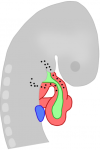 Nadia Rosenthal and co-workers discuss the role of cardiac fibroblasts in scarring and regeneration, as well as how these cells are specified during development and the unique characteristics that define them. See the Review on p. 387
Nadia Rosenthal and co-workers discuss the role of cardiac fibroblasts in scarring and regeneration, as well as how these cells are specified during development and the unique characteristics that define them. See the Review on p. 387
Posted by BSDB, on 1 February 2016
![]() As reported earlier last year, the BSDB has introduced the Cheryll Tickle Medal, which will be awarded annually to a mid-career, female scientist for her outstanding achievements in the field of Developmental Biology. The BSDB is proud to announce the inaugural awardee Prof. Abigail Saffron Tucker. The medal was handed over to Abigail at the BSCB/BSDB Spring Meeting 2016 where she presented the Cheryll Tickle Award Lecture (available on YouTube), and a post-award interview was published in Development.
As reported earlier last year, the BSDB has introduced the Cheryll Tickle Medal, which will be awarded annually to a mid-career, female scientist for her outstanding achievements in the field of Developmental Biology. The BSDB is proud to announce the inaugural awardee Prof. Abigail Saffron Tucker. The medal was handed over to Abigail at the BSCB/BSDB Spring Meeting 2016 where she presented the Cheryll Tickle Award Lecture (available on YouTube), and a post-award interview was published in Development.
Note that this post was first published in the BSDB Newletter 2015 which can be downloaded (together with newsletters of the last 10 years) here.
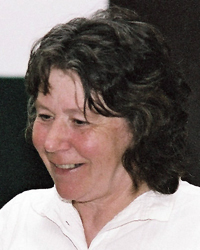 The award is named after Cheryll Tickle (CBE FRS FRSE Hon FSB), an extremely eminent cell and developmental biologist who used the developing limb bud to explore pattern formation in embryogenesis. After her undergraduate studies at Cambridge and PhD work at Glasgow, she worked as a postdoctoral researcher at Yale University, then as a postdoc in the group of Lewis Wolpert at Middlesex Hospital (later merged into UCL) where she studied the morphogen model of digit patterning. This laid the foundation for her subsequent work on the elusive limb polarising factor, mechanisms of limb outgrowth, FGF signalling, HOX gene regulation and snake limblessness. While at Middlesex/UCL, she moved up the ranks from lecturer, to reader and eventually to Professor, and shortly after she was elected a Fellow of the Royal Society, an acolade which was awarded the same year she moved to Dundee (1998). Cheryll was the first ever Waddington medal winner (1998) and became the first female Royal Society Foulerton Fellow (2000). Currently Professor Emeritus at the University of Bath, she continues to explore diverse limb projects such as the loss of the pelvic fin in natural populations of sticklebacks as well as ectopic bone formation in wounded war veterans.
The award is named after Cheryll Tickle (CBE FRS FRSE Hon FSB), an extremely eminent cell and developmental biologist who used the developing limb bud to explore pattern formation in embryogenesis. After her undergraduate studies at Cambridge and PhD work at Glasgow, she worked as a postdoctoral researcher at Yale University, then as a postdoc in the group of Lewis Wolpert at Middlesex Hospital (later merged into UCL) where she studied the morphogen model of digit patterning. This laid the foundation for her subsequent work on the elusive limb polarising factor, mechanisms of limb outgrowth, FGF signalling, HOX gene regulation and snake limblessness. While at Middlesex/UCL, she moved up the ranks from lecturer, to reader and eventually to Professor, and shortly after she was elected a Fellow of the Royal Society, an acolade which was awarded the same year she moved to Dundee (1998). Cheryll was the first ever Waddington medal winner (1998) and became the first female Royal Society Foulerton Fellow (2000). Currently Professor Emeritus at the University of Bath, she continues to explore diverse limb projects such as the loss of the pelvic fin in natural populations of sticklebacks as well as ectopic bone formation in wounded war veterans.
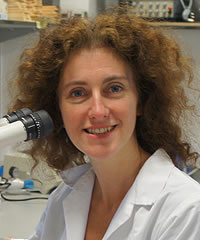 The BSDB is proud to announce the first winner of the Cheryll Tickle Medal, which will be awarded at the 2016 BSDB-BSCB Spring meeting in Warwick to Prof. Abigail Saffron Tucker. Abigail obtained her DPhil from Oxford University in 1996 in the lab of Prof Jonathan Slack. She then worked as a post-doctoral fellow at Guy’s Hospital, London, in the labs of Prof Paul Sharpe and Prof Andrew Lumsden. Here she started her interest in embryonic development of the head. She set up her own laboratory as a Wellcome Trust Research Career Development fellow in 1999 in the MRC centre for Developmental Neurobiology at King’s. In 2002 she moved to the department of Craniofacial Development within the Dental Institute at King’s College London as a Lecturer and was promoted to Senior Lecturer in 2007, Reader in 2012 and Professor in 2015. In 2014, she was selected as a Wellcome Trust Senior Investigator and leads a research team of 11 people, including an impressive number of past and present PhD students. She has three children, Poppy, Imogen and Max.
The BSDB is proud to announce the first winner of the Cheryll Tickle Medal, which will be awarded at the 2016 BSDB-BSCB Spring meeting in Warwick to Prof. Abigail Saffron Tucker. Abigail obtained her DPhil from Oxford University in 1996 in the lab of Prof Jonathan Slack. She then worked as a post-doctoral fellow at Guy’s Hospital, London, in the labs of Prof Paul Sharpe and Prof Andrew Lumsden. Here she started her interest in embryonic development of the head. She set up her own laboratory as a Wellcome Trust Research Career Development fellow in 1999 in the MRC centre for Developmental Neurobiology at King’s. In 2002 she moved to the department of Craniofacial Development within the Dental Institute at King’s College London as a Lecturer and was promoted to Senior Lecturer in 2007, Reader in 2012 and Professor in 2015. In 2014, she was selected as a Wellcome Trust Senior Investigator and leads a research team of 11 people, including an impressive number of past and present PhD students. She has three children, Poppy, Imogen and Max.
Abigail’s has published over 100 papers on Developmental Biology, many of them in high ranking scientific journals. Her research concerns the development of the head, with particular recent focus on the ear, jaw, teeth and glands, which are all linked during development depending on complex epithelial-mesenchymal interactions. The Tucker group investigates a number of aspects concerning these tissues, including the transcription factors and signalling molecules that control their patterning and shape, their embryonic origins, congenital birth defects relating to them, and how cranial structures undergo repair/regeneration. A further research line of the group investigates how evolution shapes our faces and how Developmental Biology can be used to understand the mechanisms behind evolutionary change. The lab is therefore a host to many different species for study, including snakes, geckos, chameleons, chicks, opossums, and mouse.
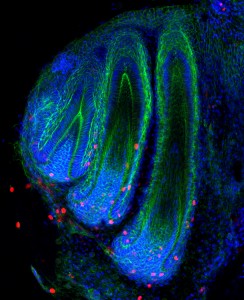
Apart from the Wellcome Trust Senior Investigator Award mentioned before, Abigail has been selected for KCL’s “Supervisory Excellence Award” in 2011, the Anatomical Society’s “Fellow of the Year” Award in 2014, the “BSDB Cheryl Tickle Medal” in 2016 and shortlisted for the “King’s Public Engagement Award” in 2015. She acts as an editor for the Journal of Anatomy and Developmental Dynamics, is a council member for the Anatomical Society, a member of KCL’s Life Sciences Museum management board, sits on the Public engagement committee of the Royal Society of Biology, and is director of postgraduate research at KCL’s Dental Institute. Besides these many scientific and administrative roles, Abigail even finds time for successful public engagement activities including the “Science uncovered evening” at the Natural History museum, the “Summer Science Exhibition” of the Royal Society, the “Cheltenham Science Festival”, giving career talks in schools and providing work experience placements, as well as contributions to broadcasted programmes, such as “Easter Eggs Live” (Channel 4, 2013) and “Your Inner Fish: an Evolution Story” (BBC4, 2015). Read here some of Abigail’s views concerning important questions concerning our field and its future.
Which are the important questions in Developmental Biology?
I love developmental biology, how you can generate a complex structure, such as the head, by combining tissues of different origin and ending up with a coordinated structure. Although we know lots about the development of many structures, there are always more questions being generated. At the moment there is a wave of research trying to understand how gene expression changes result in cellular changes that physically shape tissues and organs. We can say that a mutation in a specific gene causes a developmental defect, such as a cleft palate, but we still don’t always know how that genetic change leads to a cellular change. At the moment we are used to saying, oh that happens due to proliferation or cell death, but now people are starting to look at such cell behaviours much more closely. Personally, I find there are lots of very understudied organs/tissues/processes just waiting to be investigated. I have just started working on the external ear, which has a fabulously complex morphogenesis, but hardly anything is known about it.
Will Developmental Biology remain an important discipline that young researchers should aspire to?
I really hope so. It is a fascinating area and one that the general public are also really interested in. An understanding of Developmental Biology is also essential for understanding cell fate decisions, which is a key part of repair and regenerative biology. From an evolutionary point of view Developmental Biology is also important to provide possible mechanisms whereby evolutionary change can be generated. I have read quite a few papers where proposed mechanisms for evolution of a new structure didn’t make any sense, as the writer didn’t have a good knowledge of how structures normally form during development. From a clinical point of view you can really understand anatomy if you understand how tissues form in the first place.
Which were the key events or experiences in your life that influenced your career decisions and paved your path to success?
I have been lucky in that I always wanted to be a scientist. At the age of eleven I wrote that in 10 years time I would be starting a PhD in biology and I was, although I must admit I thought I would be travelling the world researching primates in exotic locations rather than working in a lab! At University I took a course in Developmental Biology and was hooked. At the time many great names in developmental biology were at the Oxford Developmental Biology Unit: Jonathan Slack, David Ish-Horowicz, Julian Lewis, Phil Ingham, Chris Graham to name a few. I was very lucky to arrive there at that time and it drove me to a PhD and my future career. I have also been lucky to have some really supportive supervisors and mentors over the years, which is essential, particularly while having career breaks and going part time.
What advice do you give young researchers towards a successful career?
I have really benefitted from trying different model organisms throughout my career. I moved from Xenopus to mouse to chick during my PhD and postdocs, which meant I can now use aspects of all these models to answer questions. It’s given me a much broader understanding of developmental biology and lots of flexibility. When moving to an independent career I think it’s important to come up with some real key questions you want to answer in an area you can make your own. Look out for the quirky and take advantage of new technologies but also read the old papers (some very old) as they are often a real font of forgotten information.
Posted by the Node, on 1 February 2016
We’ve had a busy start to 2016 on the Node! Check out this round-up of new content, and remember to check our Jobs page for new opportunities, and our Events page to keep up to date with conference and course deadlines.
Research
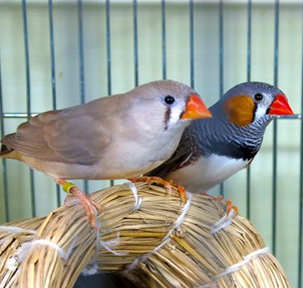 –What can zebra finches tell us about pluripotency? Raj posted about early zebra finch development and its potential for the comparative study of pluripotency in amniotes.
–What can zebra finches tell us about pluripotency? Raj posted about early zebra finch development and its potential for the comparative study of pluripotency in amniotes.
-Joseph wrote about measuring protein activity in embryos using fluorescent tandem timers, and using Timerquant, a useful modelling tool.
-How can one study the effects of age on regeneration? Konstaninos and Panagiotis wrote about how neither aging nor repeated regeneration seems to affect newts’ ability to regenerate.
-Jiho wrote about his paper addressing the controversy as to whether embryonic stem cells and induced pluripotent stem cells are molecularly and functionally equivalent.
-In addition, make sure to check out these research posts from December! Learn about the evolution of the neural crest and the developmental processes that take place during grafting in Arabidopsis. You can also read about detection of GFP-tagged proteins in whole organisms using electron microscopy and find out more about high-speed isotropic resolution microscopy.
Discussion
-This January the Node released a new series, Forgotten Classics of Developmental Biology, highlighting the hidden gems that we should all revisit. Read the first instalment, on the 1940 paper that first identified the cell layers in the shoot meristem.
–How important is drawing to observing and studying development? Beatrice gives us an insight into Edwin Conklin’s view of drawing as a tool for research.
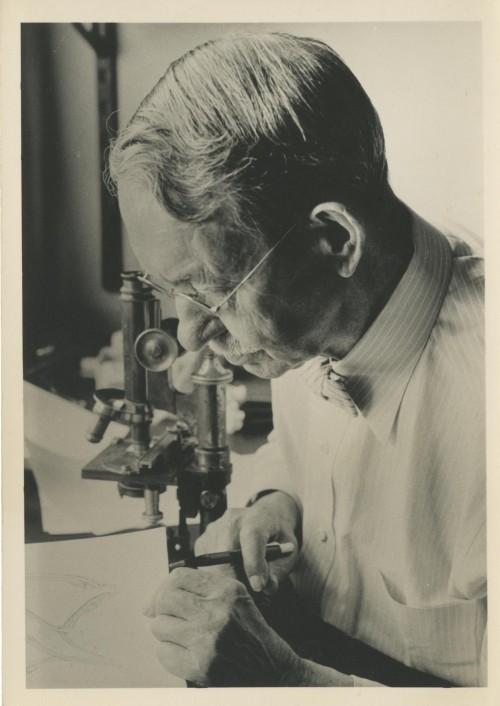
Also on the Node
-Check out this amazing timelapse of pre-implantation development in mouse, posted by Kate!
-The Node and Abcam are looking for a meeting reporter to attend the Abcam Germ Line Stem Cells Conference in San Francisco. The application deadline is the 15th of April, and the lucky reporter will get free registration to the conference!
-There’s still time to participate in the first Development cover image competition of the year! Voting is open until noon GMT on the 4th of February.
Interviews
 -We featured this interview with Peter Lawrence first published in Development, where he talks about developmental biology, science funding and the ideal size for a lab!
-We featured this interview with Peter Lawrence first published in Development, where he talks about developmental biology, science funding and the ideal size for a lab!
-We also posted this interview with Melina Shcuh, who studies meiosis in mammalian oocytes. First published in the Journal of Cell Science.
Happy reading!
Posted by the Node, on 29 January 2016
Last week the Montreal Neurological Institute announced that it will become the first fully Open Science academic institute. In addition to making their results and data available for free upon publication, this initiative also includes a commitment not to register patents on any of their discoveries. This announcement comes in contrast with the ongoing heated dispute on who should hold the patent for CRISPR. In light of these two opposing views, this month we are asking:
Should scientists and institutes be allowed to patent research performed with public funds?
Share your thoughts by leaving a comment below! You can comment anonymously if you prefer. We are also collating answers on social media via this Storify. And if you have any ideas for future questions please drop us an email!
Posted by __Deleted user__, on 28 January 2016
Closing Date: 15 March 2021
The Copenhagen Bioscience PhD programme is a new initiative that offers talented students with a university degree from outside of Denmark an opportunity to launch their careers in the vibrant environment of the Novo Nordisk Foundation research center cluster. Sixteen students will be recruited annually through the programme for enrolment in August the same year. In 2016 the programme will be open for applications from January 4 to February 29.
Students will be selected based on academic achievements, research experience, academic references and interviews. The interviews will take place in Copenhagen on April 18-19, 2016. The Novo Nordisk Foundation will pay for travel and accommodation for selected candidates in association with the interview visit.
Posted by JFMulley, on 28 January 2016
Closing Date: 15 March 2021
Bangor University will provide matched funding for applicants interested in applying for Leverhulme Trust Early Career Fellowships.
https://www.leverhulme.ac.uk/funding/grant-schemes/early-career-fellowships
The School of Biological Sciences (https://www.bangor.ac.uk/biology/) has facilities for the maintenance of marine invertebrates, tropical freshwater fish, small mammals and fruitflies/insects, with research groups working on genetic and developmental aspects of these and other groups.
Interested applicants can contact Dr John Mulley (j.mulley@bangor.ac.uk) or the College of Natural Sciences Research Support Officer, Michelle Jones (michelle.jones@bangor.ac.uk) to learn more. The closing date is the 10th March 2016.
Posted by Karuna Sampath, on 27 January 2016
Closing Date: 15 March 2021
http://www.jobs.ac.uk/job/AUC078/wellcome-trust-independent-senior-research-fellow-75344-016/
The University of Warwick has initiated a Wellcome-Trust funded research programme in “Quantitative Biomedicine” to bridge physical / mathematical sciences and biomedicine. The programme is of a cross-campus nature with strong participation from the Division of Biomedical Cell Biology and the Warwick Systems Biology Centre.
We are seeking early career researchers who are no more than 4 years from obtaining a Doctoral degree with the potential to lead a strong independent research programme. The candidates will be selected based on their track record in innovative research and on the strength of the research proposal. Importantly, the proposals should make clear how the project benefits from quantitative methodologies. The proposed research programme should bring together physical and mathematical sciences and biomedical sciences (including cell and developmental biology, neurobiology, immunology, microbiology and infection). Identified candidates will be provided salary, laboratory space, running costs and part-time technical support for three years. The successful candidates will be expected to win externally funded fellowships within the contract period and will be mentored in preparing such applications.
Interested candidates should submit their CV, a two-page research proposal, and the names and addresses of three referees who are able to comment on the candidates past research work as well as the readiness of the candidate to embark on an independent career in research.
Posted by Alistair, on 27 January 2016
Dear Colleagues,
We are delighted to offer our 3rd Eco-Evo-Devo Postgraduate Summer School from August 8th to 12th 2016 at Oxford Brookes University.
For full details please see the Summer School website:
http://bms.brookes.ac.uk/ceec/courses/eco-evo-devo-summer
Alistair McGregor.
